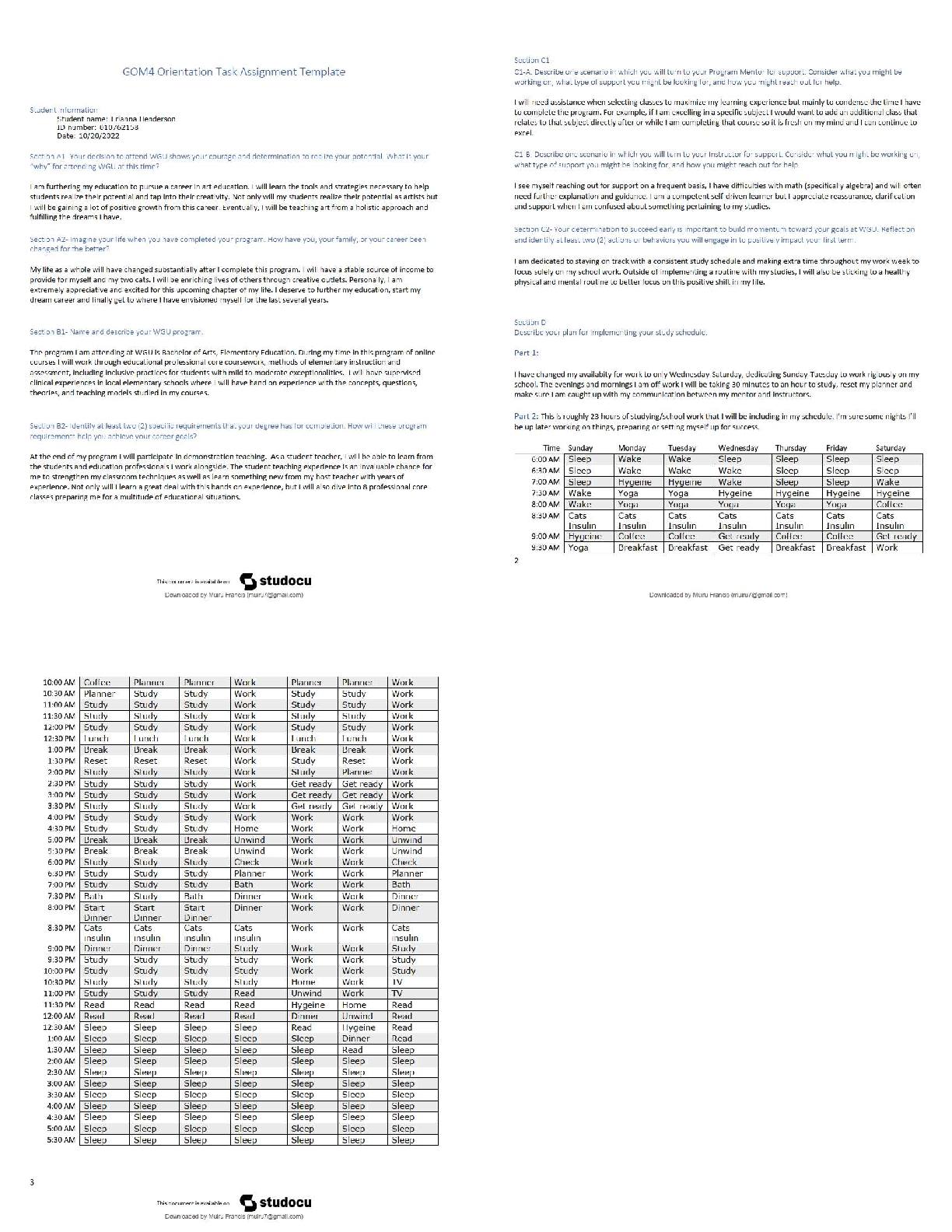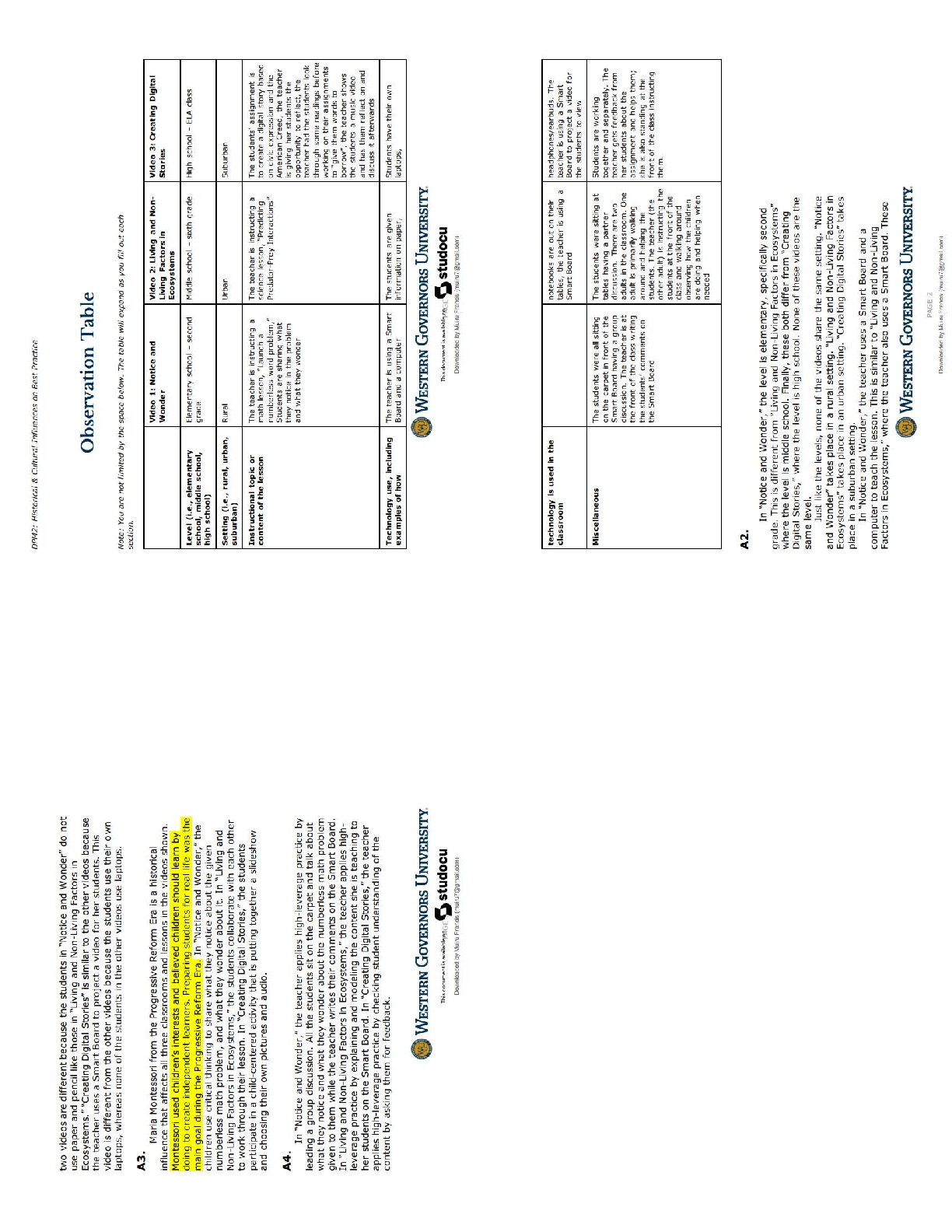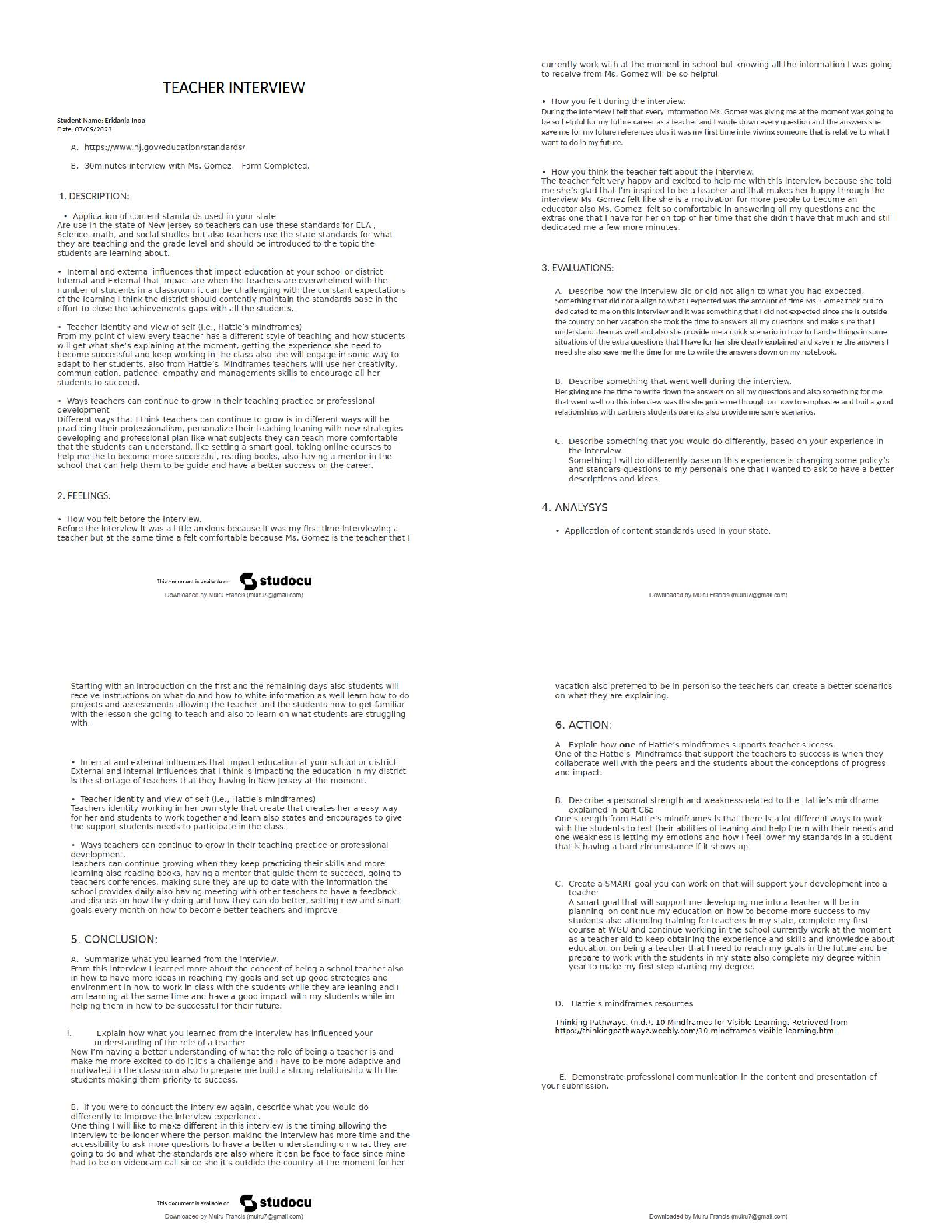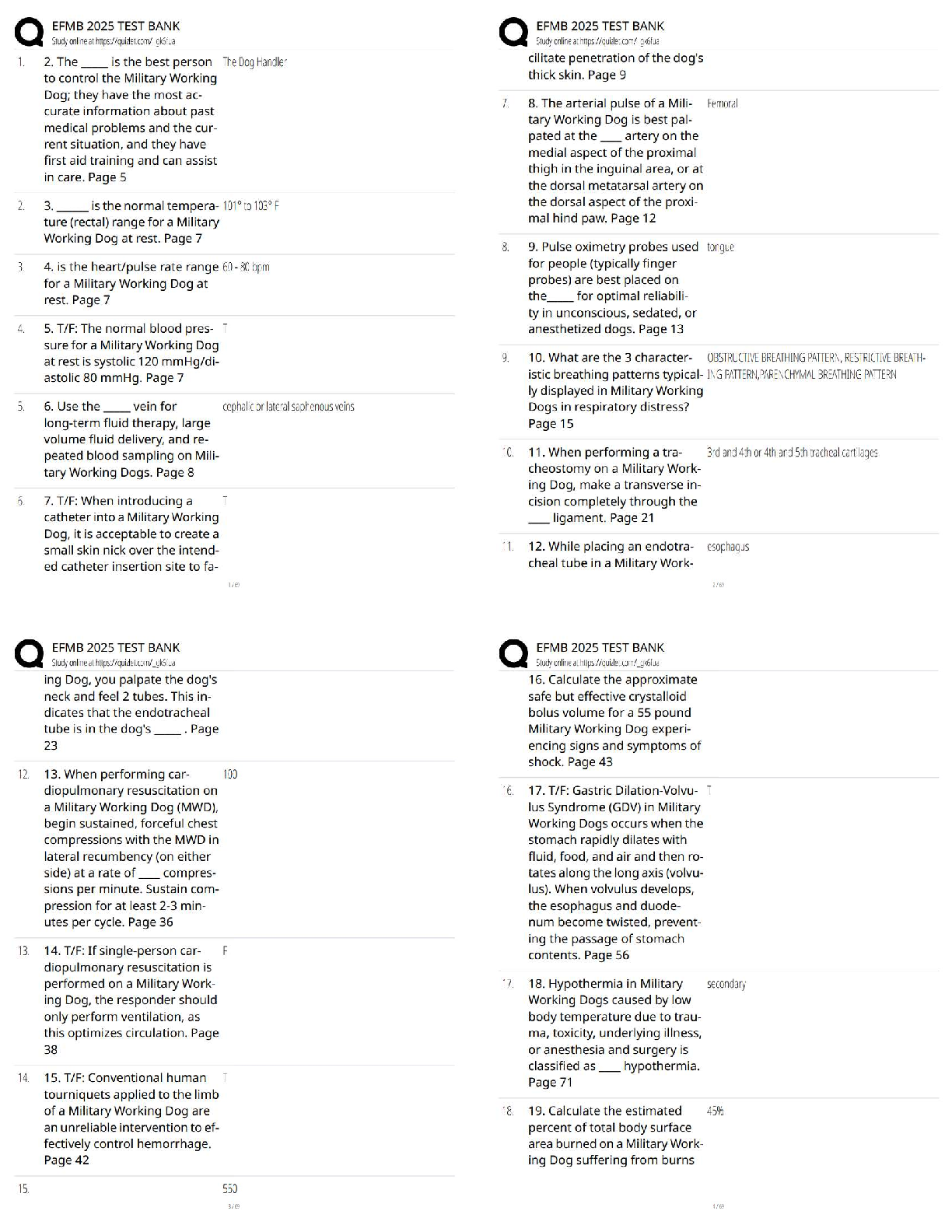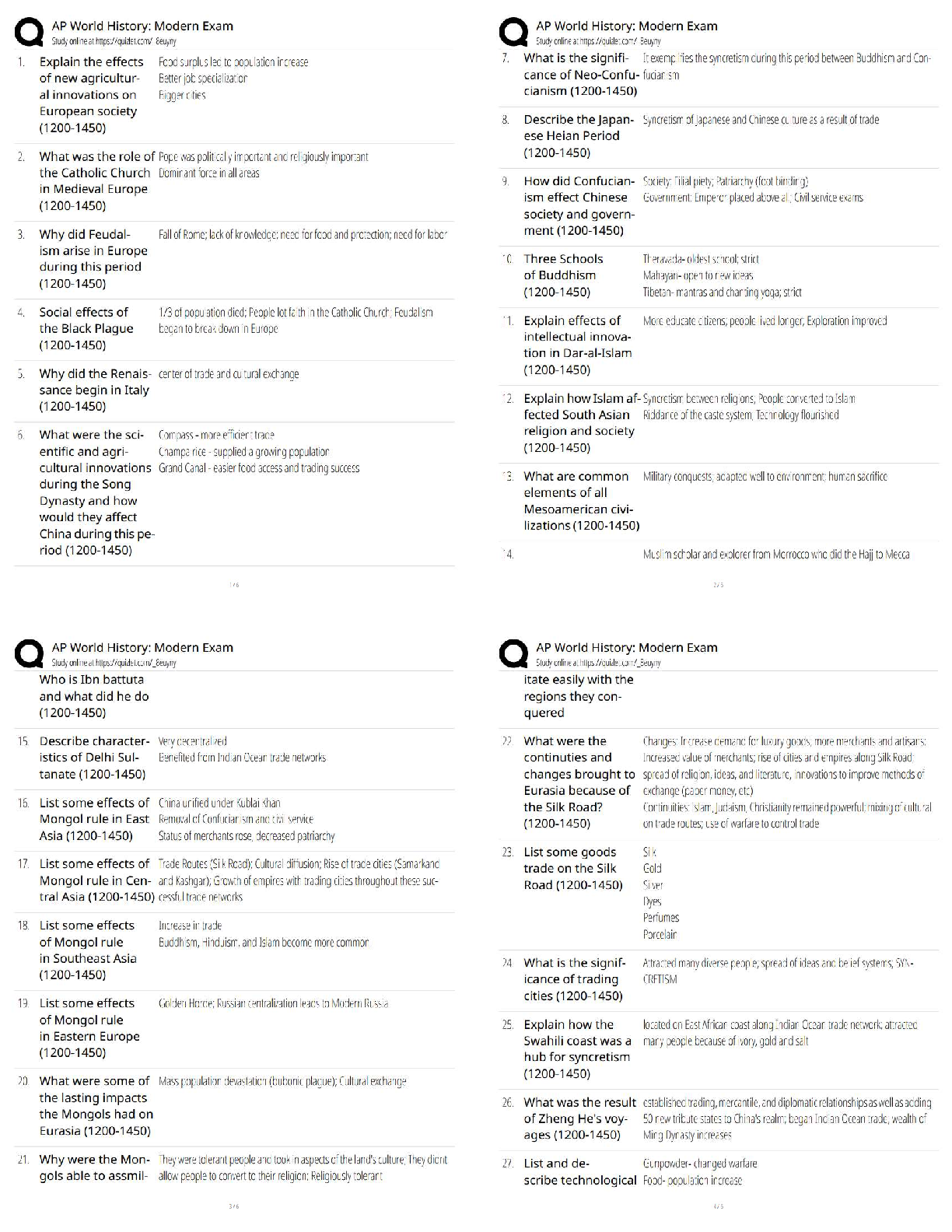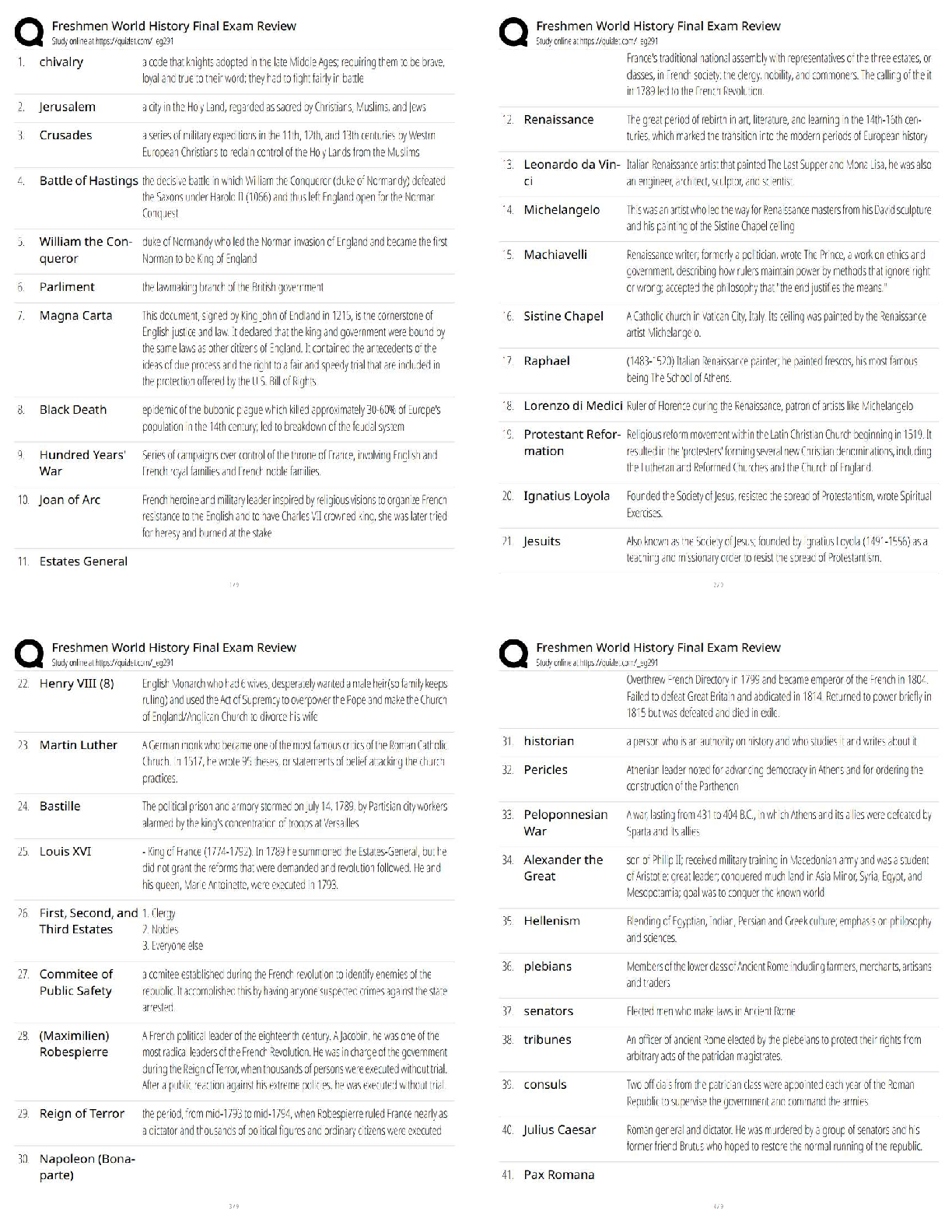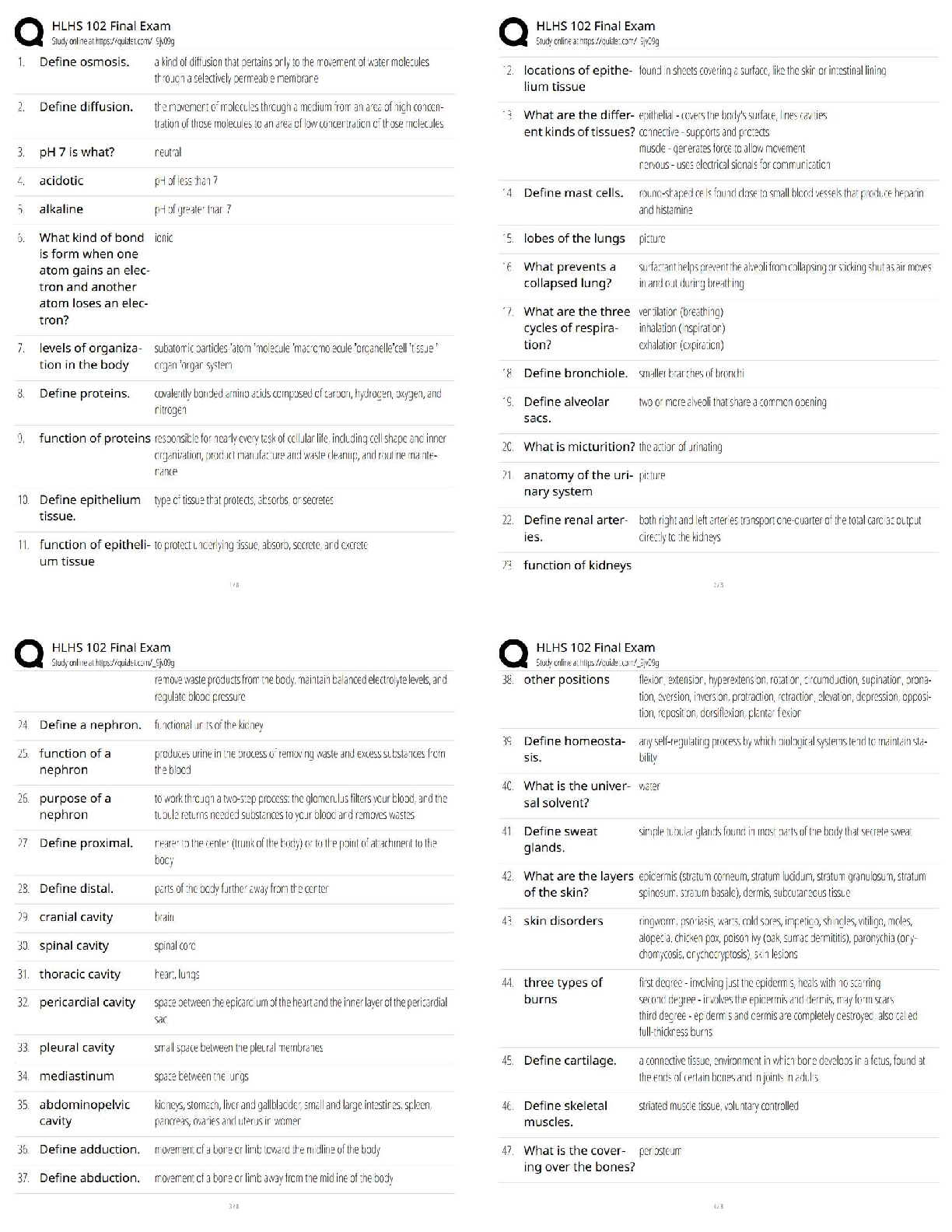*NURSING > QUESTIONS & ANSWERS > NRNP 6566 / NRNP6566 Advanced Care of Adults in Acute Settings I Week 6 Knowledge Check | Questions (All)
NRNP 6566 / NRNP6566 Advanced Care of Adults in Acute Settings I Week 6 Knowledge Check | Questions and Verified Answers | Latest 2020 / 2021
Document Content and Description Below
NRNP 6566 / NRNP6566 Advanced Care of Adults in Acute Settings I Week 6 Knowledge Check | Questions and Verified Answers | Latest 2020 / 2021 A 54 year old female has a 30 year pack smoking hi ... story. She recently underwent pulmonary function testing which showed moderate obstructive lung disease. What would your treatment plan (including medications) include for this patient? Correct Answer: The Global Initiative for Chronic Obstructive Lung Disease (GOLD) 2020 suggests that smoking cessation should be immediately pursued if the patient is still smoking. Nicotine replacement (gum, inhaler, nasal spray, patch, lozenge, or sublingual tablet) are reliable methods to assist in long term smoking cessation. Varenicline, bupropion, and nortriptyline also increase long term quit rates but should be one part of an intervention program and not the sole intervention. Professional counseling and support have a positive impact on smoking cessation. Bronchodilators are the baseline medication for COPD patients. Patients can be initiated on short acting beta agonists (SABA) or long term beta agonists (LABA) based on their symptoms. Short acting medications come in various forms including inhaler, nebulizer, pills, or liquid syrup. Long acting bronchodilators are delivered via inhaler or nebulizer. Combinations of SABA and LABA s are common in treatment plans for COPD patients. LABA have a duration of action of 12 hours while SABA last for about 4-6 hours. SABA can provide immediate symptom relief. A 23-year-old male with Type 1 diabetes presents to the ER complaining of fatigue and malaise. He tells you he has skipped his insulin injections the previous two days. His labs are: PH 7.10 Na 140 BUN 35 PCO2 10 K 4.1 Crt 1.1 PO2 112 Cl 105 BS 845 HCO3 4 CO2 5 + ketonemia What is this patient's acid base status? What is your working diagnosis for this patient? Correct Answer: Metabolic acidosis with respiratory alkalosis pH is low Normal HCO3 is 22-26 so 4 is low causing acidosis Leading diagnosis – Diabetic Ketoacidosis Anion gap is elevated at 31 Elevated blood sugar with positive ketones present are key symptoms of diabetic ketoacidosis For the following ABGs, identify the level of hypoxemia, the primary acid base disorder, and the type of compensation. Example - acute respiratory acidosis with metabolic alkalosis and severe hypoxemia ABG Result pH pCO2 pO2 HCO3 7.08 54 54 15 Corre ct Answ er: Acute respiratory and metabolic acidosis with moderate hypoxemia A 66 year old male is diagnosed with COPD. His current medications include hydrochlorothiazide 25 mg po daily, lisinopril 20 mg po daily, and Crestor 10 mg po daily. The APRN has ordered salbutamol 4 mg po TID. What side effects may occur? Correct Answer: Tachycardia and palpitations may occur due to the stimulation of the beta2- adrenergic receptors. Older patients with higher doses of beta2-agonists may experience an exaggerated somatic tremor. Hypokalemia is possible especially when beta2-agonists are combined with thiazide diuretics. Oxygen consumption may be increased in rising conditions in patients with chronic heart failure those these effects can decrease over time. Hypertension, hypotension, angina, and arrhythmia are possible as well. A 62 year old patient with COPD is hypoxic and SOB. He is currently on BiPAP with the order reading 12/5 100% Rate 12. Explain what each number in the BIPAP order means. Describe what BIPAP is and when it can and cannot be utilized Correct Answer: 12 is the initial inspiratory positive airway pressure (IPAP) 5 is the initial expiratory positive airway pressure (EPAP) These rates can be increased by 2-5 cm H20 Rate of 12 breaths per minute FIO2 initially set at 100% (can be titrated down) Noninvasive positive pressure ventilation (NIPPV) refers to the delivery of positive pressure ventilator support without the insertion of an endotracheal tube. This intervention works to improve lung volumes and decrease the work of breathing. NIPPV can be considered in Type 1 Respiratory failure which is when the patient cannot oxygenate such as pulmonary edema. Also in Type 2 Respiratory failure which is when a patient cannot ventilate such as in COPD. Do not use it in patients that are apneic, hemodynamically unstable, or with excessive secretions. Endotracheal intubation would be indicated if the patient becomes acidotic (pH<7.25), respiratory rate greater than 30, shock, refractory hypoxemia, vomiting, or declining mental status. For the following ABGs, identify the level of hypoxemia, the primary acid base disorder, and the type of compensation. Example - acute respiratory acidosis with metabolic alkalosis and severe hypoxemia ABG Result pH pCO2 pO2 HCO3 7.25 74.3 32 14 Corre ct Answ er: Acute respiratory & metabolic acidosis with severe hypoxemia For the following ABGs, identify the level of hypoxemia, the primary acid base disorder, and the type of compensation. Example - acute respiratory acidosis with metabolic alkalosis and severe hypoxemia ABG Result pH pCO2 pO2 HCO3 7.34 60 52 30 Corre ct Answ er: Respiratory acidosis with metabolic alkalosis & moderate hypoxemia A 14 year old female asthmatic is brought to the ER in moderate respiratory distress. Her PEF is 55% of predicted. What would your immediate medication orders include? Correct Answer: Albuterol inhaled 0.5 mg / kg nebulizer every 20 minutes for 3 doses Prednisone 1 mg/ kg /day orally - give half dose even 12 hours Oxygen to maintain saturations of at least 90% although 94% is preferred in children Assess for presence of infection as a trigger for the acute asthma attack. Antibiotics would be added if bacterial infection is present. A 65-year-old female suddenly becomes hypotensive one day following surgery for a fractured femur. Her ABG before surgery on room air showed a pO2 of 84 and pCo2 of 39. FIO2 0.21 Hb 11.5 pH 7.47 pCO2 32 pO2 57 HCO3 23 SaO2 83% What are the major differential diagnoses to consider as an etiology for the change in her status? Correct Answer: Her acid base balance is essentially normal but she is hypoxic with low oxygen saturation. Her hemoglobin is normal so there is capacity to carry oxygen to the tissues. Potential diagnosis to consider would be: Pulmonary embolism - blood clots in the lung would prevent diffusion of oxygen and lead to low saturation Hypovolemic shock – low fluid volume leading to low blood pressure and poor perfusion would lead to low oxygen saturation and perfusion Pneumonia – infection in the lung with accumulated fluids would also prevent diffusion of oxygen For the following ABGs, identify the level of hypoxemia, the primary acid base disorder, and the type of compensation. Example - acute respiratory acidosis with metabolic alkalosis and severe hypoxemia ABG Result pH pCO2 pO2 HCO3 7.51 39.4 77.3 31.3 Corre ct Answ er: Uncompensated metabolic alkalosis with mild hypoxemia [Show More]
Last updated: 3 years ago
Preview 1 out of 8 pages

Buy this document to get the full access instantly
Instant Download Access after purchase
Buy NowInstant download
We Accept:

Also available in bundle (1)
Click Below to Access Bundle(s)

NRNP 6566 / NRNP6566 Advanced Care of Adults in Acute Settings I Knowledge Check PLUS KEY CONCEPTS
NRNP 6566 / NRNP6566 Advanced Care of Adults in Acute Settings I Knowledge Check PLUS KEY CONCEPTS
By Prof. Goodluck 4 years ago
$14.5
7
Reviews( 0 )
$5.00
Can't find what you want? Try our AI powered Search
Document information
Connected school, study & course
About the document
Uploaded On
May 17, 2021
Number of pages
8
Written in
All
Additional information
This document has been written for:
Uploaded
May 17, 2021
Downloads
0
Views
135

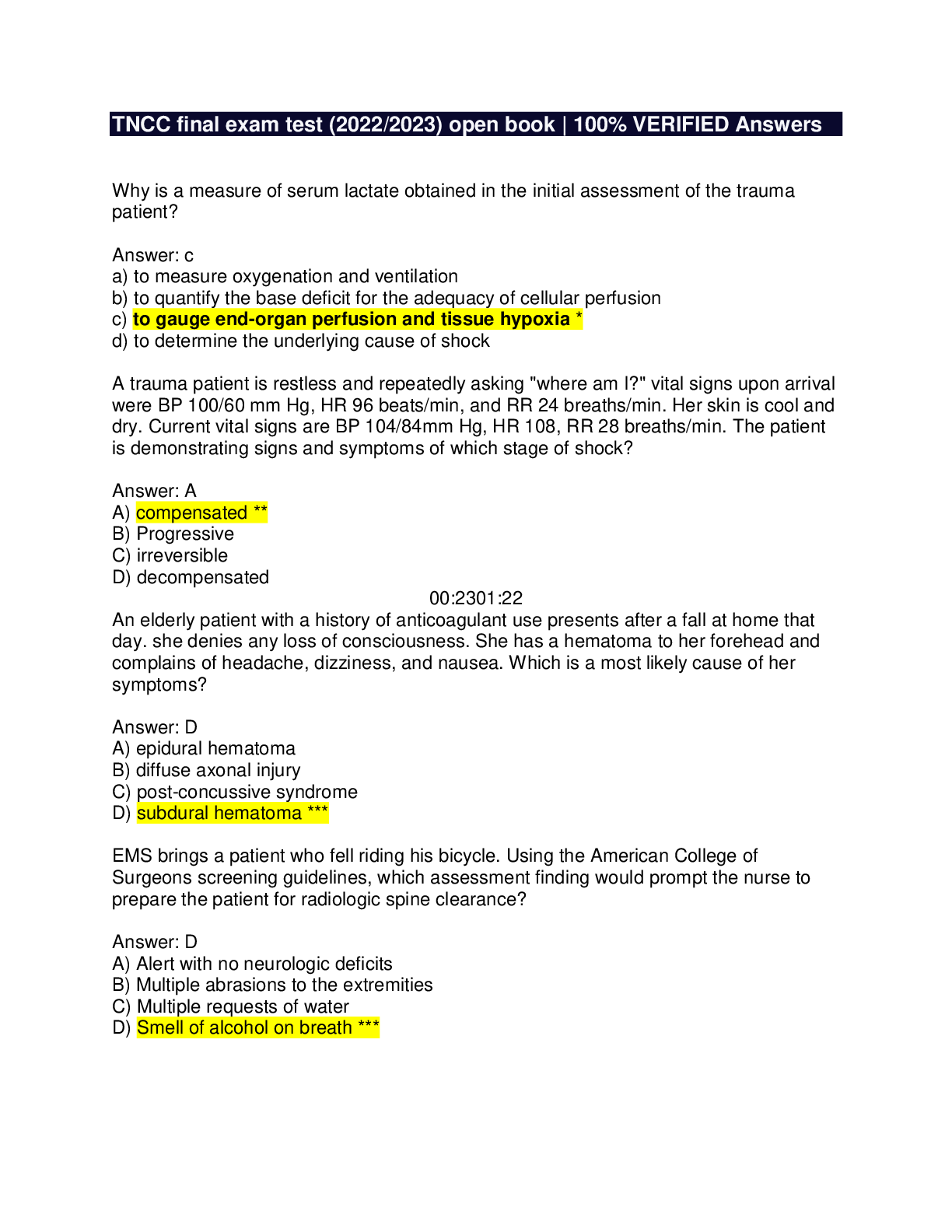
 And LETRS Unit 8 Final Assessment Test.png)











